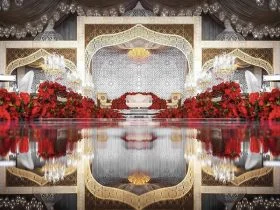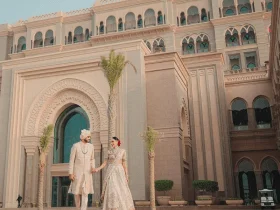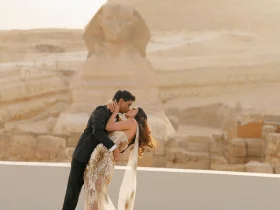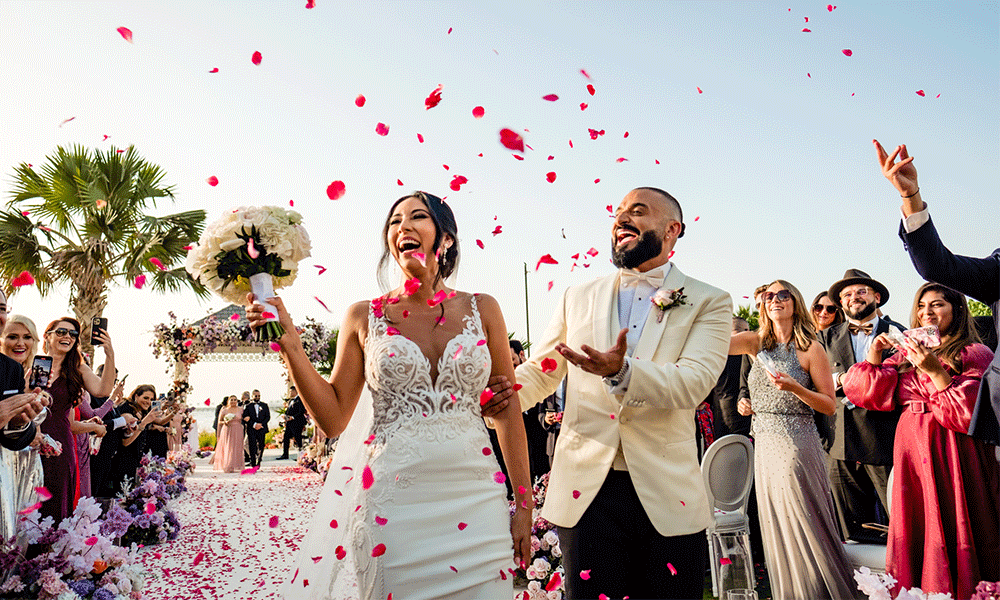Weddings – a timeless celebration of love and unity, transcending across cultures and continents, painting the world with the beautiful hues of its myriad traditions. Each culture has its unique wedding customs, embodying a rich tapestry of history, ethos, and beliefs. These traditions, a seamless blend of age-old practices and symbolic rituals, mirror the essence of societies and the values they hold dear. From intricate ceremonies that honor the sanctity of two souls intertwining to customs designed to shun the shadows of evil spirits, every tradition tells a captivating tale of its own, whispered through generations, maintaining the charm and emotional weight they’ve held for centuries.
In this enchanting journey, we’ll embark on a global exploration, delving into eight of the world’s oldest and most fascinating wedding traditions. Each one is deeply ingrained in its cultural roots, bearing the heartbeats of history and culture, and resonating with the melodies of love, respect, and unity. Through this expedition, we’ll uncover the magical narratives intertwined with each practice, offering a panoramic view into the heart of societal bonds, familial ties, and the time-honored celebration of love known as marriage. So, sit back, relax, and get ready to step into the mesmerizing world of wedding traditions that continue to charm, inspire, and captivate to this day.
The Veiling of the Bride – Ancient Greece and Rome

Originating in ancient Greece and Rome, the tradition of the bride wearing a veil holds significant symbolic meaning. It was believed that evil spirits would be jealous of the bride’s happiness and would attempt to harm her. As a protection, the bride wore a veil to shield herself from these malevolent spirits. Today, the veil has evolved into a fashion statement, with many brides choosing veils that complement their wedding gowns, but its symbolic significance remains intact.
Jumping the Broom – African American Culture

The tradition of ‘Jumping the Broom’ has its roots deeply planted in the African American culture. Couples with African roots choose to honor the history of perseverance many forebears fought for. To publically declare their commitment, a couple would jump over a broom together, symbolizing their entrance into matrimony and domesticity. This act, performed in front of witnesses, was their form of a wedding ceremony. Today, many African American couples choose to include this powerful tradition in their weddings to honor their ancestors and their struggle for love and freedom.
Henna Ceremony – Middle Eastern and North African Cultures

In Middle Eastern and North African cultures, the Henna or Mehendi ceremony is an elaborate, joyous celebration that takes place a night before the wedding. The henna paste, known for its vibrant reddish hue, is applied in intricate designs on the bride’s hands and feet. This ritual is not only about beautification but also holds significant symbolism. This tradition is cherished in Asian countries aswell. It’s believed that henna brings joy, luck, and protection against the evil eye. The darker the henna stain, the stronger the bond between the couple and the closer the relationship with the mother-in-law, or so it is believed.
Arras (Unity Coins) – Latin American and Filipino Cultures

The tradition of ‘arras’ or unity coins is deeply ingrained in Latin American and Filipino cultures. In this ritual, the groom gifts the bride 13 gold coins, which are blessed by the priest. These coins, carried in a decorated box or tray, symbolize the groom’s commitment to support his wife and their future children, acknowledging his role as the provider. Each coin represents Jesus and his 12 apostles, underlining the couple’s faith in God’s guidance in their marital journey.
Sake-Sharing Ceremony – Japan

In traditional Japanese weddings, the ‘San-san-kudo’ or Sake-sharing ceremony is a highlight. The ritual involves three rounds of sake drinking from three different-sized cups, the smallest cup presented first. The bride and groom each take three sips from each cup, making nine sips in total – a lucky number in Japanese culture. The ritual is then repeated by their parents, symbolizing the union of two families. This unique ritual is a solemn pledge before the gods and a binding agreement between the couple and their families.
Breaking the Glass – Jewish Weddings

The breaking of the glass is one of the most recognized traditions of a Jewish wedding. After the marriage vows, the groom and the bride stomp on a glass wrapped in a cloth to shatter it, and the guests shout “Mazel Tov!” which means “Congratulations!” This tradition has many interpretations. It’s also seen as a symbol of the fragility of relationships, reminding the couple of the care and effort required to maintain their marital bond.
Kanyadaan – Indian Culture

In Indian weddings, ‘Kanyadaan’ is a deeply emotional ritual. It involves the bride’s father placing his daughter’s hand into the groom’s, symbolizing the ‘giving away’ of his daughter to her new life. The father asks the groom to accept his daughter as an equal partner, signifying his trust and blessings for their union. This poignant moment is often accompanied by a rush of mixed emotions as it signifies the end of the bride’s life with her parents and the beginning of her new journey with her husband.
Handfasting – Celtic Tradition

In ancient Celtic ceremonies, handfasting was the traditional method of recognizing a binding union. The couple’s hands were tied together using a cord or ribbon, symbolizing their commitment to each other. This literal ‘tying of the knot’ has grown in popularity and is often integrated into modern wedding ceremonies around the world. The cord can be a family heirloom or something created specifically for the couple, adding a personal and meaningful touch to the ceremony.
As we arrive at the end of this captivating exploration of global wedding traditions, it’s impossible not to be profoundly moved by the beauty, diversity, and deep symbolic meaning that these rituals embody. Each tradition, unique and distinct, is a celebration of love, a pledge of lifelong commitment, a token of respect, and a powerful symbol of the merging of two families. They are the threads that weave the intricate tapestry of matrimonial customs, binding us together in a shared human experience. Each of these traditions gives us a glimpse into the cultural intricacies that shape our perception and celebration of love and marriage. From the snowy landscapes of Russia to the vibrant hues of India, from the seashell-laden beaches of the Philippines to the sakura-filled gardens of Japan, these customs remind us that although we may be separated by geography and language, the fundamental sentiments of love, unity, and commitment remain universal.
So whether you’re planning your own wedding or simply a lover of culture and history, we hope these stories have sparked in you a sense of wonder and a deeper appreciation for the rich tapestry of global wedding traditions. They are a testament to our collective human spirit, a spirit that celebrates love in all its forms and expressions. In this rapidly changing world, these traditions stand as stalwart reminders of our roots, our heritage, and our shared humanity. And as we step into the future, may we continue to honor and cherish these timeless rituals that so beautifully encapsulate the essence of love and unity. Because in the end, it’s these shared experiences and age-old traditions that truly enrich the narrative of our human journey.
We invite you to share your thoughts and reflections on these diverse global wedding traditions in the comments section below. We value a respectful and engaging dialogue, and encourage conversations that honor and appreciate the cultural and traditional richness of all communities.
For more interesting follow us on our Instagram.












Leave a Reply